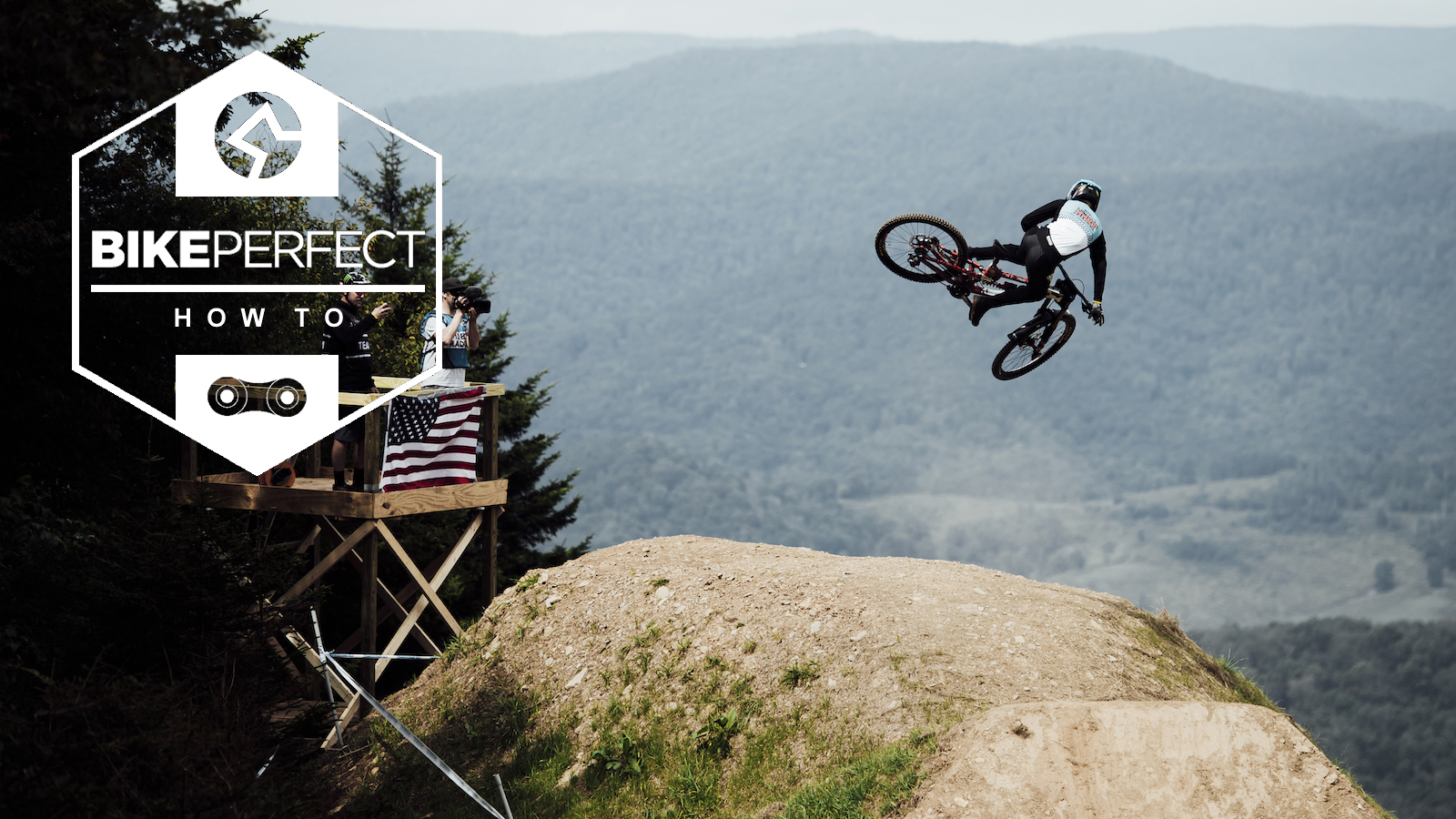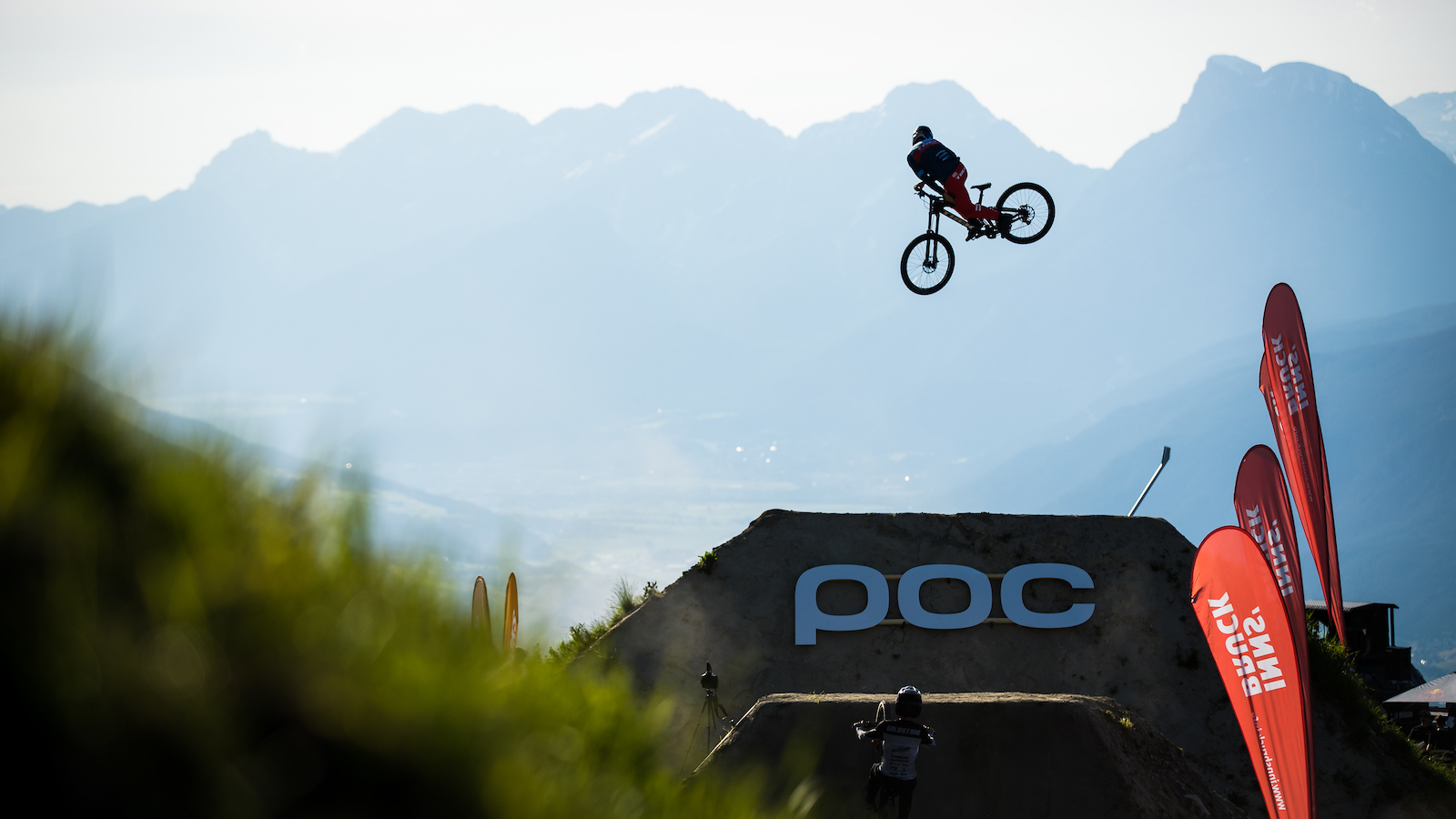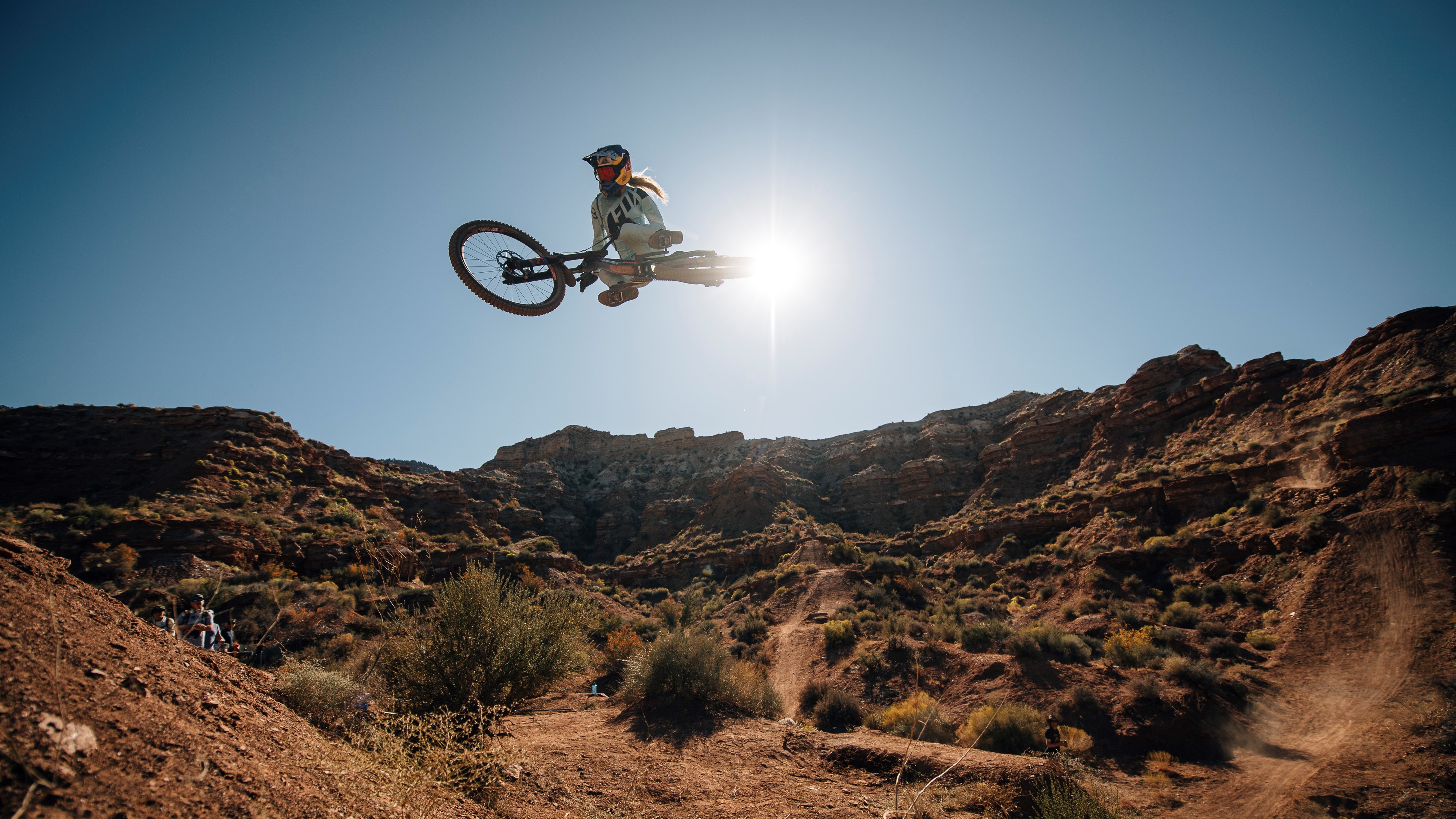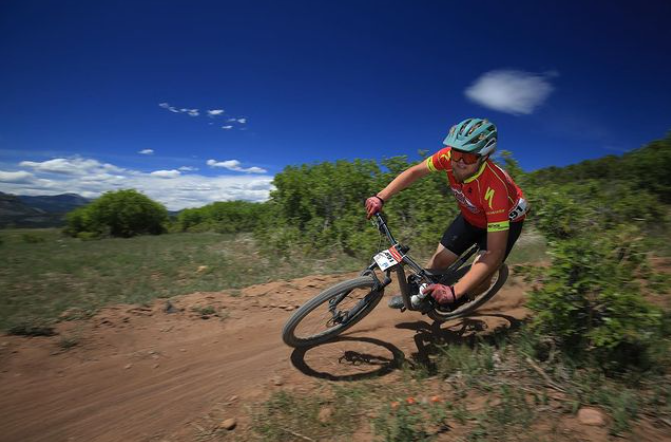How to whip a mountain bike
Performing a whip can make you look stylish on the bike but more importantly it will help improve your control in the air

If you've spent any time looking at mountain bike photos or videos, you've probably seen a rider whipping off a jump. The whip is one of the most stylish, yet simple tricks that a mountain biker can do off a jump.
Not only does it add some style for that Instagram shot, but it is also a good way to stabilize yourself in the air. On bigger jumps, keeping your body and bike stiff can make you feel out of control, like a 'dead sailor'. But adding some movement can add control and stability.
What is a whip, you may be asking? It's when a rider turns their bike and body perpendicular to the direction of the trail when in the air. See the pictures in this article for example.

To do a whip, you first need an appropriately sized jump. This means that you need to be a fairly confident jumper in order to start to learn to whip. That's not to say that whips can't be done on smaller jumps, but you'll need enough airtime to learn the proper motions.
Tabletop jumps are great since you don't have to worry about casing them. Bike park trails with lots of consecutive jumps are an ideal location since you can get a ton of practice in during one run alone.
1. Master the jump
If you're confident about the jumps but haven't tried moving your bike around in the air a lot, that could be a place to start. Start by simply turning your handlebars in the air or tilting your bike to the side. One technique to start learning how to whip is by combining those two motions. Turn your bars, tilt your bike over, and let your rear wheel come around you on the opposite side that your bars are turning.
- How to start mountain biking
- Mountain bike slang: All of the MTB terms and slang that you should know

2. Carve off the lip
That's the basic motion, but to truly whip, you need to carve off the lip of the jump. So, if you're going to whip to the right, approach the jump from the left side, and as you are traveling toward the lip, carve to the right. This sets your whip in motion before you are in the air, and better allows your back wheel to come around you.
As you are hitting the lip, keep your eyes and shoulders pointed ahead. Your hips are what make the whip possible. The hips will already be engaged from the carving motion, but continue to swing them around in the direction of the whip.
3. Follow the motion
Once in the air, follow the hip movement in the air to encourage the bike to continue to turn in the air. Think of your body like a coiled spring under tension, as when you reach the maximum point of your whip, you will need to reverse the movements of your hips as you approach the landing. You should also pay attention to your hands. In the case of whipping the bike to the right, your left hand will naturally be a bit lower than your right.
4. Prepare to land
To bring the whip back for landing, straighten your bars out as well as your hips. This should happen rather naturally since your eyes and shoulders should be looking down the trail. Another technique that helps is leaning forward toward the landing. Of course, everyone knows that you can't always bring whips back perfectly!
That's the basic technique, and by far the best way to get better is to hit lots of jump lines and getting comfortable with moving the bike around in the air. The repetition of hitting lots of jumps in a row will have you throwing stylish whips in no time. It's also valuable to watch other riders. Look at pictures and videos, pay attention to what they are doing with their body, and emulate them. Or, see more advice from pros like Finn Iles.
Ryan Simonovich has been riding and racing for nearly a decade. He got his start as a cross-country mountain bike racer in California, where he cultivated his love for riding all types of bikes. Ryan eventually gravitated toward enduro and downhill racing but has also been found in the occasional road and cyclo-cross events. Today, he regularly rides the trails of Durango, Colorado, and is aiming to make a career out of chronicling the sport of cycling.
Rides: Santa Cruz Hightower, Specialized Tarmac SL4

